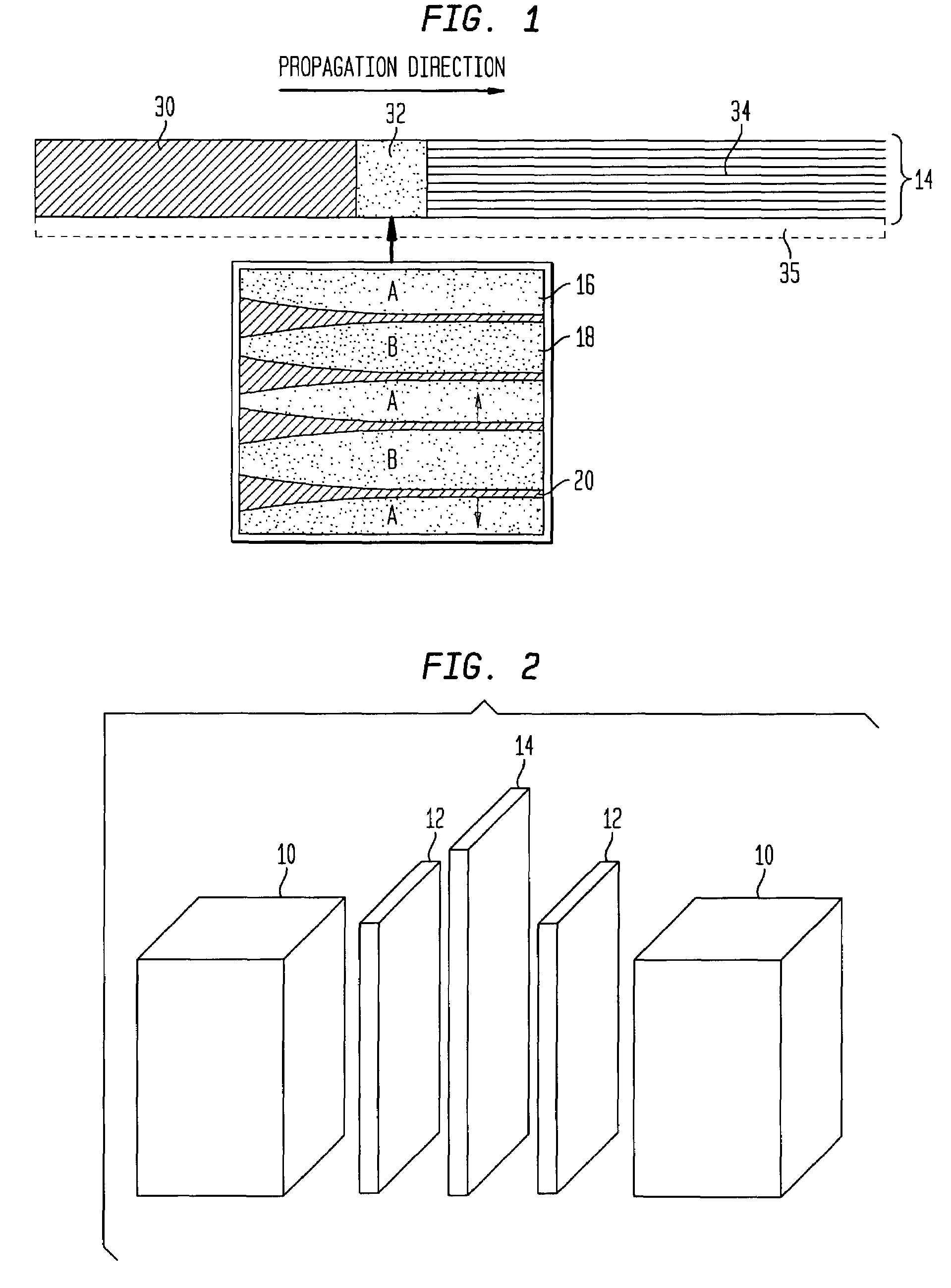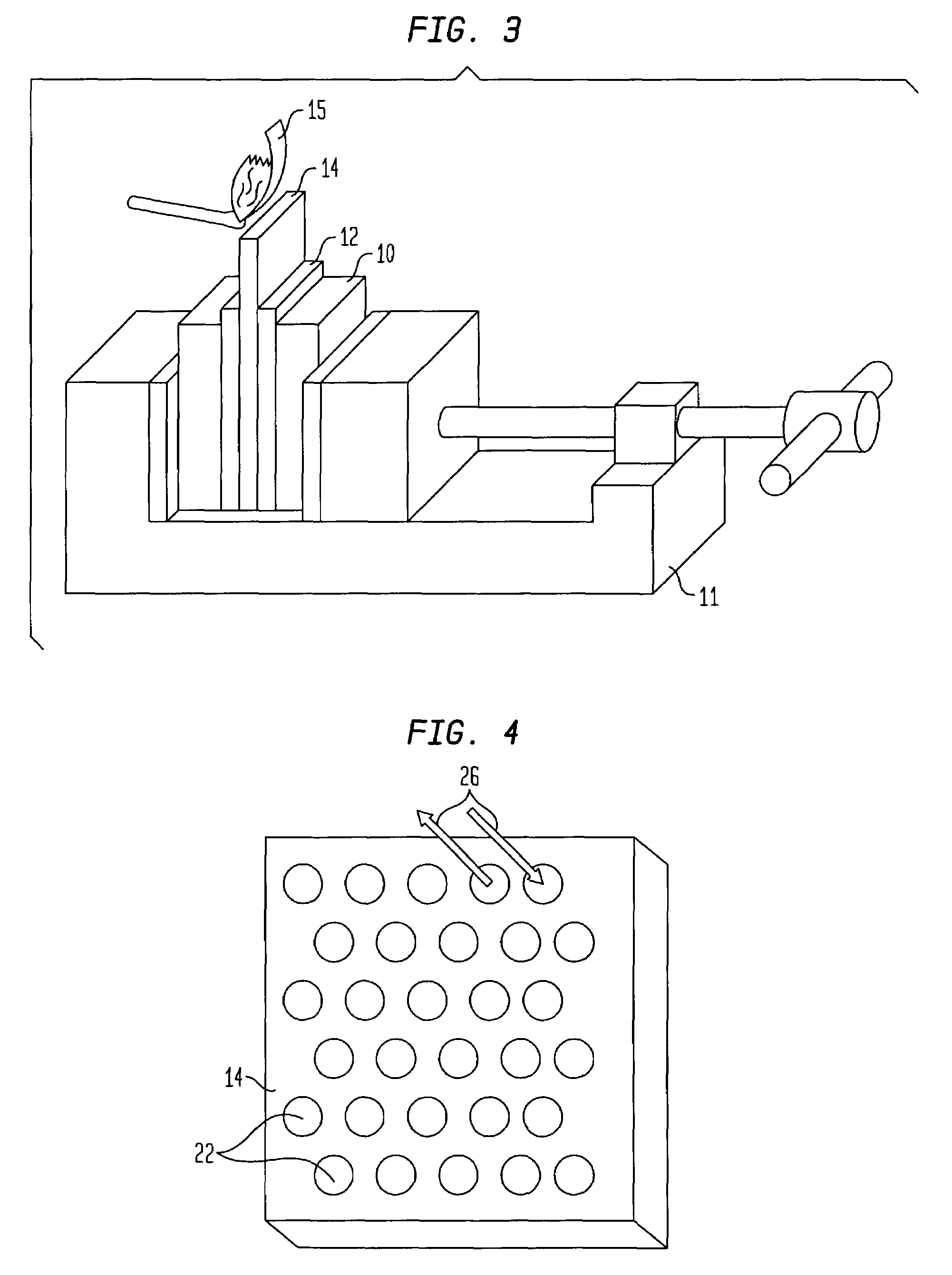Methods of making and using freestanding reactive multilayer foils
- Summary
- Abstract
- Description
- Claims
- Application Information
AI Technical Summary
Benefits of technology
Problems solved by technology
Method used
Image
Examples
example 1
[0064]Reactive foils of Al and Ni are formed by cold rolling many 5 μm sheets of Ni and Al that are stacked together. FIG. 6 schematically illustrates fabrication of the foil 60 by passage of the stack 61 between rollers 62A and 62B. The sheets can be cold-rolled several times until the layers are reduced to the desired thickness.
example 2
[0065]Instead of utilizing foils comprised of multilayers of uniform thickness, a composite foil is used, in which nanolaminate reactive multilayers are deposited onto reactive microlaminate foils. As illustrated in FIG. 7 certain sections of layers 70 within the reactive foil 71 will be of a nanoscale (nanolaminate), while other sections 72 will be of micron-thick layers (microlaminate). The nanolaminate, as described above, will react easily and the reaction, once started, will self-propagate along the length of the foil without being quenched by the melting of the surrounding braze layers or bulk components. Thus, the nanolaminate can be viewed as an igniter for the microlaminate. The section 72 with microscale layers may not be able to sustain a self-propagating reaction at room temperature, but when heated by adjacent nanolaminate sections 70, it will sustain such a reaction. The foil can comprise alternate layers of Al and Ni.
example 3
[0066]In fabricating these composite foils, sheets of Al and Ni are rolled to form the microlaminate section and then a nanolaminate foil is vapor deposited onto either side of this microlaminate structure. Fabrication may also be performed through vapor deposition of the full composite with the microlaminate layers deposited at much higher rates without igniting the foil or causing unacceptable intermixing between the alternating layers during deposition.
PUM
| Property | Measurement | Unit |
|---|---|---|
| Thickness | aaaaa | aaaaa |
| Force constant | aaaaa | aaaaa |
| Thickness | aaaaa | aaaaa |
Abstract
Description
Claims
Application Information
 Login to View More
Login to View More - R&D
- Intellectual Property
- Life Sciences
- Materials
- Tech Scout
- Unparalleled Data Quality
- Higher Quality Content
- 60% Fewer Hallucinations
Browse by: Latest US Patents, China's latest patents, Technical Efficacy Thesaurus, Application Domain, Technology Topic, Popular Technical Reports.
© 2025 PatSnap. All rights reserved.Legal|Privacy policy|Modern Slavery Act Transparency Statement|Sitemap|About US| Contact US: help@patsnap.com



